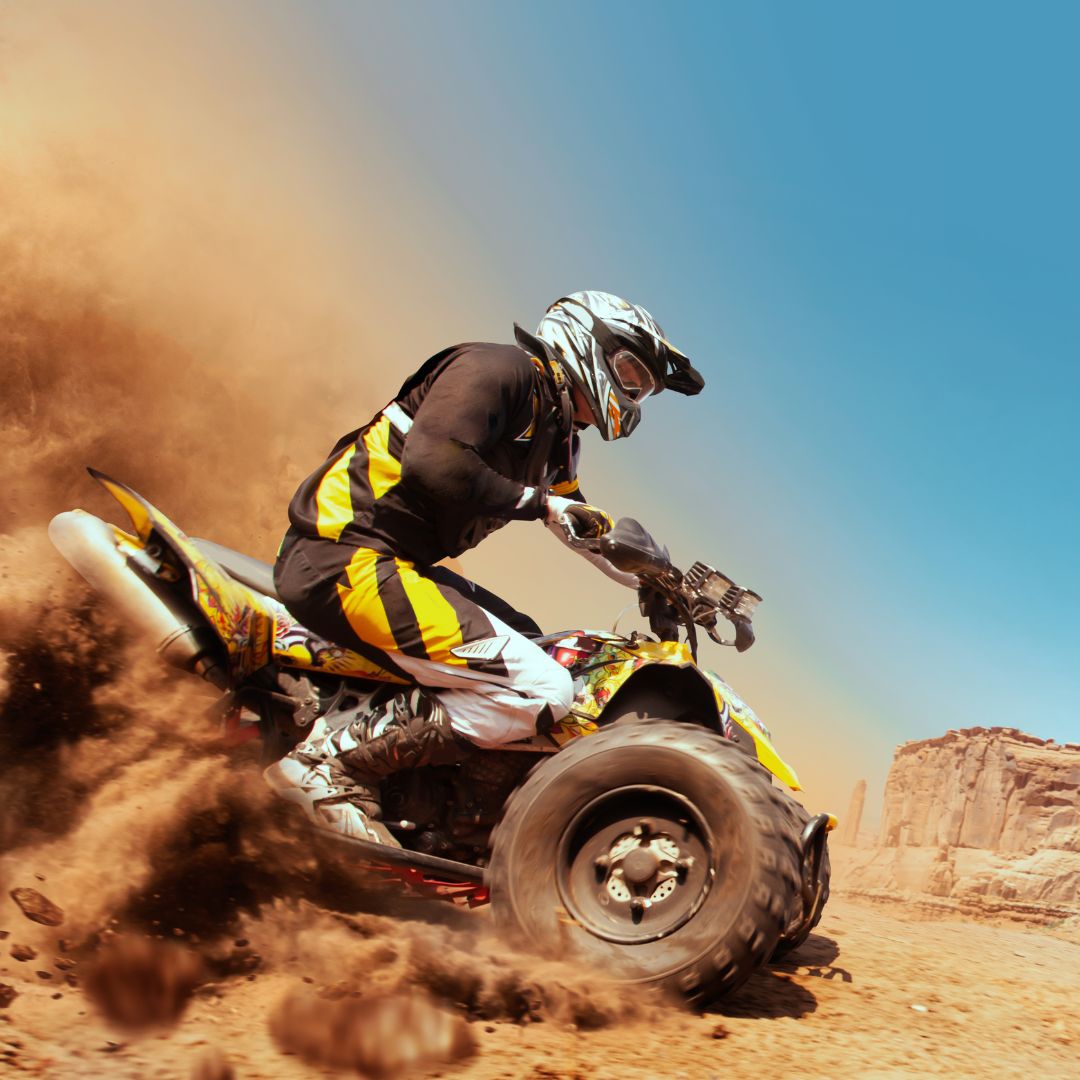
Updated: 9.5.25
Whether you're zipping around for fun or navigating challenging terrains, how you position your body on that four-wheeled beast makes all the difference.
Buckle up as we explore why body positioning isn't just about comfort—it's the cornerstone of quad biking excellence.
1. Safety Considerations
The Role of Correct Body Position
Your body is your quad's stabiliser. Leaning into turns and shifting weight helps prevent tumbles and improves safety.
Reducing Accident Risks
A well-positioned rider glides over bumps and avoids obstacles more effectively—less guesswork, more control.
2. Control and Maneuverability
Importance of Body Positioning for Control
Shifts in seating can enhance responsiveness—think of your body as the joystick.
Impact on Steering and Braking
Proper posture = smoother braking + agile turning. It’s riding smart, not hard.
3. Impact on Performance
How Body Position Influences Performance
Your alignment helps unleash your quad's true capabilities—safely.
Linking Body Position to Capabilities
Adapting your posture is like activating performance mode—more traction, better control, greater fun.
4. Riding Techniques
Body Positions for Different Scenarios
Posture should match pace: relaxed for leisure, dynamic for adventure.
Optimising Traction and Stability
The right position boosts grip—balance is your secret weapon.
Adjusting Mid-Ride
Mid-ride shifts are key. Lean uphill, brace downhill, adjust for every terrain.
5. Body Positioning Tips
Maintain the Right Posture
Stay flexible and alert. Recheck your posture often—ride aware, ride better.
Relaxation = Performance
Loosen up! Tension restricts movement; being relaxed improves reaction and control.
Seasonal Adaptations
Cold = defensive stance. Dry = more fluid posture. Adjust based on trail and season.
6. Training and Education
Training Matters
Even pros keep learning. Coaching sharpens your instincts and improves technique.
Refining Your Form
Instructors help personalise your posture game. Small tweaks = big improvements.
Tech Tools
Apps and wearables offer feedback. Video reviews pinpoint exactly where to improve.
7. Equipment and Gear
Choosing the Right Quad
Your body should match your bike. Comfort and control begin with fit.
Gear That Enhances Control
From gloves to boots, every bit of gear influences your ride and positioning.
8. Health and Performance
Physical & Mental Benefits
Less fatigue, better control, more confidence—good posture does all that.
Fixing Common Mistakes
- Leaning too far back: Lean slightly forward during acceleration for better balance.
- Stiff limbs: Stay relaxed to absorb shock and maintain control.
- Ignoring terrain: Adjust posture to match inclines, declines, or uneven trails.
- Overcompensating on turns: Lean just enough to stay in control—practice makes perfect.
- Forgetting to relax: Take breaks, breathe deeply, and loosen your grip.
Core Strength Is Key
Build your core for better posture and longer rides. Try planks, yoga, or basic strength routines.
Conclusion
Ride With Purpose
Body positioning enhances safety, unlocks performance, and makes every ride more fun.
Learn & Share
Join communities, exchange tips, and evolve as a rider with every turn of the wheel.
The Final Takeaway
Mastering your posture is the secret to mastering your ride. Stay aware, stay relaxed—and enjoy every adventure.
Get in Touch 🚀
Enjoyed our article on The Importance Of Body Position In Quad Biking? Want more wheely-awesome tips?
Parents, grandparents, and quad-lovers—we’re here for your ride-on toy questions! 🚗💨
Browse RiiRoo.com or hop onto our Live Chat for a chat!







Share:
Advanced Quad Bike Riding Techniques for Experienced Riders
10 ESSENTIAL Techniques for Proper Quad Bike Braking